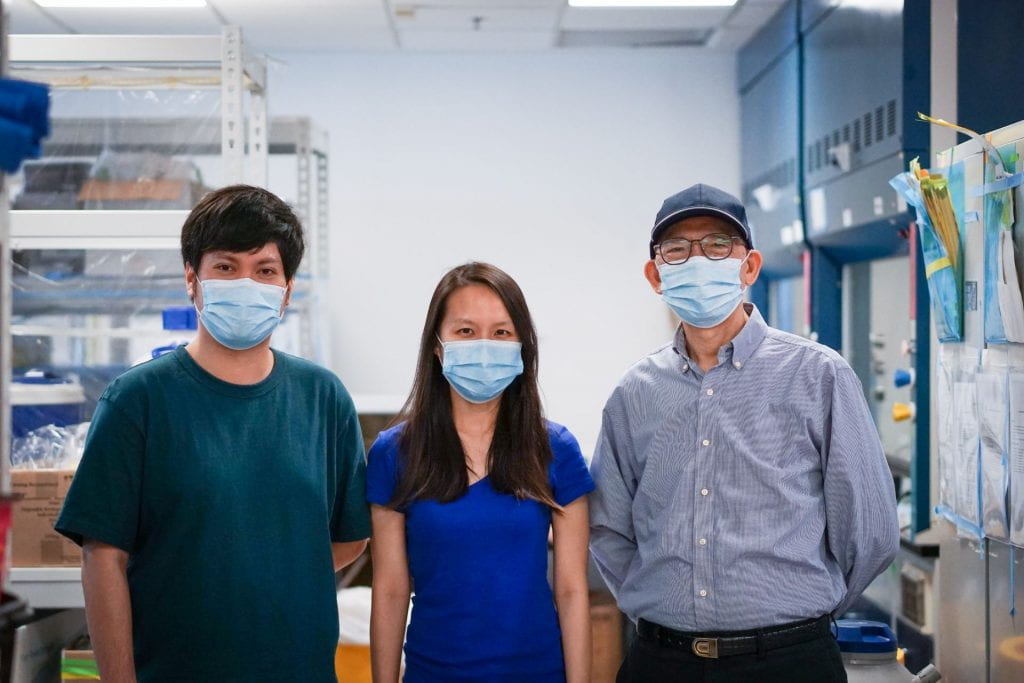Around 463 million people in the world suffer from diabetes. You’ve probably heard about this disease – and might even know someone who suffers from it – but what exactly is diabetes? Diabetes is a chronic disease that occurs when the pancreas ceases to produce insulin, or when the body cannot use the insulin it produces, leading to raised blood glucose levels. High glucose levels are associated with damage to the body and failure of various organs and tissues.
One of the complications of diabetes include chronic wounds, especially on the feet. Left untreated, these could lead to serious infections which may require toe, foot or leg amputation. At least 15% of diabetic patients will develop ulcers on the feet.
Proteins called epidermal growth factors (EGF) are clinically approved in several countries for the treatment of diabetic foot ulcers. Like a key opening a lock, an EGF binds to an EGF receptor (EGFR), stimulating cell growth. While EGF offers promise in wound management, its poor stability in the microenvironment of chronic wounds tempered the enthusiasm of its clinical use as frequent applications are required to achieve the desired therapeutic effects.
“Many degradative enzymes from our body as well as from bacteria are present in chronic wounds. They degrade EGF rapidly, rendering it useless. Developing an ultrastable EGF-like molecule would address this issue and in turn, accelerate wound healing and lower treatment costs,” explained Professor Tam.

Left to right: Dr Antony Kam, Dr Shining Loo and Prof James Tam
Professor Tam’s team might have just found a breakthrough: Pereskia bleo, more commonly known as the humble rose cactus. A popular Southeast Asian medicinal herb, its leaves are traditionally consumed in Singapore and Malaysia to treat gastritis, haemorrhoids, and ulcers, suggesting the presence of wound-healing compounds. This plant is being grown in NTU’s very own herb garden.

Pereskia bleo, also known as the rose cactus. Photo by Dr Shining Loo
Earlier research conducted by the team showed that Pereskia bleo’s aqueous extracts contain the protein pB1. In their paper published in May 2021 in the Journal of Medicinal Chemistry, guided by its ethnomedicinal use to treat gastric ulcers, they found that pB1 is a hyperstable EGFR agonist – a more stable molecule that can bind to EGFR, in place of EGF.
However, pB1 was found to be 50 to 100-fold less potent than EGF. After close scrutiny of the ’hot spot’ of pB1, the team chemically synthesized the more potent analog, [K29k]pB1. Compared to pB1, the analog displayed higher affinity (stronger binding interactions) in binding to EGFR. Higher affinity binding implies that a lower concentration of the analog is needed to trigger a response.
Proteins are very delicate molecules and sensitive to changes in its environment. A protein’s shape, and therefore function, can be altered by changes in heat and acidity, among other factors. In terms of stability, pB1 and its analog were found to be at least 100-fold more stable than EGF against enzymatic, heat and acid degradation.

Dr Loo loading pB1-treated cell samples into the live-cell imaging plate reader for analysis
Besides being the smallest naturally-occurring and the first plant-derived EGFR agonist reported to date, pB1 also has antifungal properties, which is an added advantage in the treatment of wounds. The discovery of pB1 could fuel further interest in developing EGFR agonists and antagonists for basic and translational research.
Also, the discovery of an improved pB1 analog [K29k]pB1 – equally as potent as EGF – could advance the development of potent therapeutic analogs for wound healing, regenerative medicine, and skincare. The team plans to develop even smaller analogs as lead candidates for phase I trials.
On the team’s research moving forward, Professor Tam shared, “Besides the treatment of chronic skin and corneal wounds, which are notoriously difficult to heal, the ultrastable EGF analogs show promise in cancer treatment, cosmetics and cultured meat production.
Since aberrant regulation of EGF or its receptor is associated with certain type of cancers, our findings also open new avenues to develop targeted therapies for cancer. EGF analogs can also be used as a substitute for foetal calf serum for the laboratory-based meat production. This will eliminate the dependence of animal-derived products to produce cultured meat.”
Read the full paper here.
Find out more about Professor Tam’s research here.
